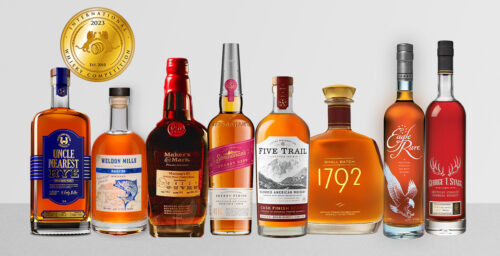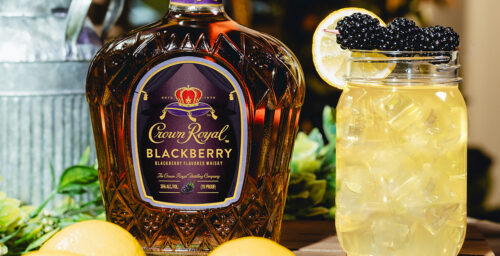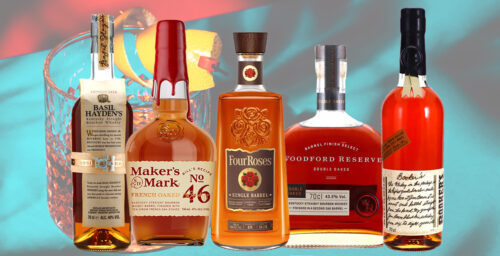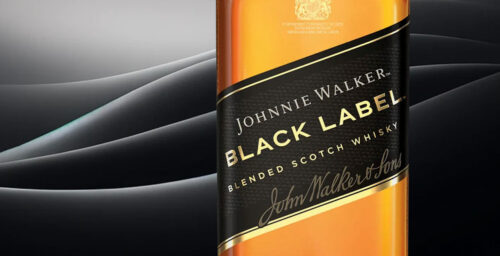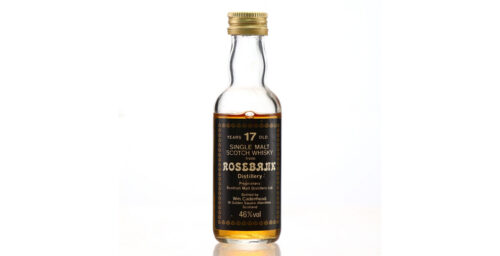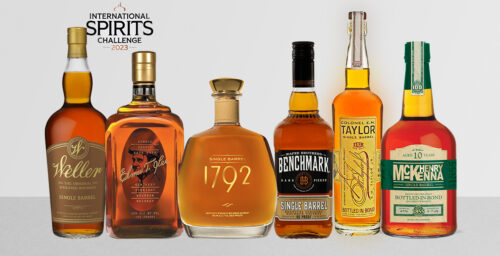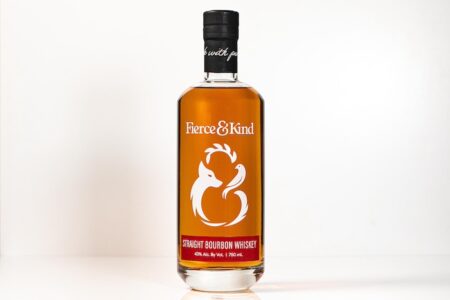The rise, decline, and rebirth of the Irish whiskey industry has been an important chapter in the history of the whiskey industry. At its peak, Irish whiskey dominated the world whiskey market. In the mid-19th century, Ireland had 88 licensed distillers, more distillers than Scotland. But the industry fell on hard times, and before its more recent revival, it dwindled to just a tiny handful of producers. In this story, we examine the first half of Irish whiskey’s history: from dominance to decline. In an upcoming story, we’ll trace its more recent history, following its astonishing revival.
When Alfred Barnard chronicled The Whisky Distilleries of the United Kingdom in 1887, he visited 28 Irish distilleries, many of which were among the largest in the world. At the time, Irish distillers controlled about 70 percent of the world whiskey market. Two out of every three bottles of whiskey sold in London were Irish. It was the bestselling imported whiskey in the United States, second only to bourbon. Even in Scotland, Irish whiskey outsold Scotch whisky.
Between 1823, when the British Parliament passed the Excise Act which permitted the licensing of whiskey distillers, and 1900, the production of whiskey in Ireland quadrupled. Belfast, Cork, and Derry all became major distillation centers. It was Dublin, however, that was the center of Irish whiskey distillation. Dublin had six distilleries, four of which (John Jameson, William Jameson, John Power and George Roe) dominated the trade. These four distillers alone had a capacity of around five million gallons of whiskey.
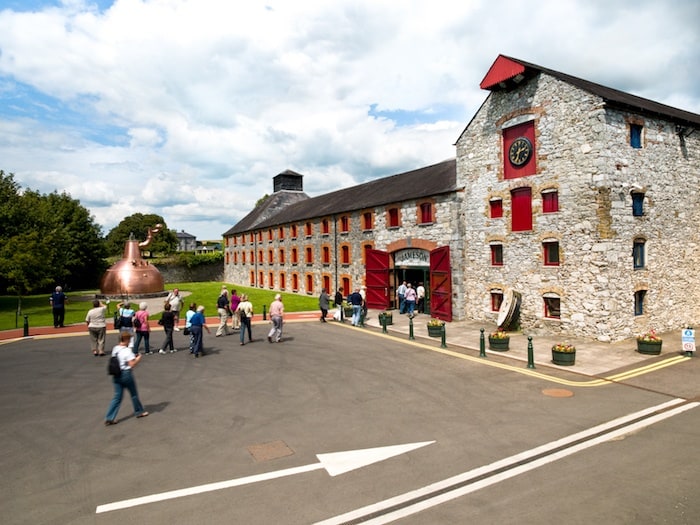
George Roe and Son, located on Thomas Street in the Liberties, the center of Irish whiskey production dubbed the Golden Triangle, was in particular the single largest producer of whiskey in the world, with a capacity of around two million gallons a year. The distillery covered 17 acres.
Some of the regional distillers were equally impressive. West Cork Distillers, which owned the North Mall and Midleton distilleries, the latter the predecessor to IDL’s New Midleton Distillery, had a combined capacity of 1.5 million gallons. The Royal Irish Distilleries in Belfast had five pot stills and two column stills with a combined production of 1.5 million gallons and the largest inventory of aging whiskey in Great Britain. By comparison, the Glenlivet Distillery, then among the largest in Scotland, had a capacity of around 200,000 gallons.
Irish whiskey production, at its apex, reached over 30 million gallons a year, the equivalent of 12 million nine liter cases. From there, it began a steady decline that would see production bottoming at just under 500,000 gallons a year, less than 200,000 cases, by the 1980’s, and an international market share of less than one percent of global whiskey sales.
The reasons for the decline of the Irish whiskey industry were many and varied. The Scots proved to be brilliant marketers, creating powerful international brands. By eventually vertically integrating the entire production process, from distillation to bottling and distribution, they also were able to maintain tight control over product quality.
Irish distillers, on the other hand, until the 1970s, usually continued to ship in bulk to independent bottlers, a practice that often led to dilution or substitution. During Prohibition, Scotch distillers shipped bottled whisky to the United States, a practice that prevented adulteration and rapidly gained a reputation for product quality, while bulk barrel shipments by Irish distillers or their distributors were often diluted with inferior spirit.
Irish independence in 1919 cut off Ireland’s whiskey companies from their lucrative markets in the British Empire. That same year, the Volstead Act brought prohibition to the United States, killing Irish whiskey’s single largest market. The new Irish government, who saw the distillers as pro-British Unionists, imposed heavy taxes on the domestic sales of whiskey. Even worse, in order to maximize its tax revenues from domestic sales, it capped export sales of Irish whiskey at half of the prewar levels and then cut them by half again a few years later.
The resulting decrease in production decimated inventories of maturing whiskey. When Prohibition finally ended in 1933, the lack of inventories and export quotas prevented Irish distillers from ramping up shipments to the U.S., while Scotch producers had the benefit of ample stocks and a newly won reputation for high quality. Scotch whisky quickly become the leading imported whisky in the U.S.; a position it has maintained to this day.
The principal reason for the demise of Irish whiskey’s dominance of the international whiskey trade, however, was the combination of the rise of blended Scotch whisky and the rampant adulteration of Irish pot still whiskey with low cost grain alcohol; what the Irish pot still distillers called “silent spirit”.
In 1860, the government of British Prime Minister William Gladstone enacted the Spirits Act. The new legislation allowed the blending of inexpensive, column distilled grain whisky with single malt and pot still whiskies. It also allowed whisky to be held in bonded warehouses, free of duty, until it was bottled for sale.
The act allowed blenders like Johnnie Walker, Tommy Dewar and Thomas Buchanan to create new whisky blends by combining inexpensive grain whisky with a variety of Scottish single malts. These new namesake blends had an aroma and taste that were very similar to Irish whiskey, but were far cheaper to produce.
In addition, to add insult to injury, unscrupulous bottlers and middlemen, many of them Irish, would often mix a small quantity of Irish pot still whiskey into Scottish grain whisky and export it as Irish pot still whiskey. The principal Irish distillers however, including the big four Dublin distillers, refused to blend grain whiskey with their pot still whiskey. Jameson whiskey, for example, currently Ireland’s best-selling whiskey, did not become a blend until the early 1970s.
The question of whether pot still whiskies blended with “silent spirit” could be called whiskey was debated extensively in the British Parliament at the turn of the century. The big four Dublin distillers even jointly published a book, Truths About Whiskey, where they laid out their case that whiskey that contained grain alcohol from a Coffey still did not constitute real whiskey and arguing that its labeling as whiskey constituted a fraud on consumers.
Following a series of legal challenges, Parliament ordered a Royal Commission on Whiskey and other Potable Spirits to investigate the issue and make a recommendation. In 1908, the Commission published their findings in which they concluded that whiskey blended with “silent spirit” could in fact be called whiskey. For the Dublin distillers, it was the beginning of the end.
By the 1960’s, there were only five distilleries left, three in Ireland, John Power & Son, John Jameson & Son and Cork Distilleries, and two in Northern Ireland, Bushmills and Coleraine. In 1966, the three Irish distillers merged to form United Distillers of Ireland, later changed to Irish Distillers Ltd (IDL).
In 1975, all production from their historic distilleries was shut down and relocated to a new distillery in Midleton, Cork. The new distillery had been built adjacent to the old Midleton Distillery and had both column and pot stills.
In 1976, following its acquisition of Bushmills, Seagram exchanged the distillery for a 15 percent share in IDL. Two years later, Coleraine, which had only been producing grain whiskey was shut down, and Bushmills began to source their grain whiskey from Midleton.
Volumes continued to drop however, both domestically and internationally. By the mid-80’s, the industry had hit bottom. Fortunately, Irish whiskey’s fortunes were about to turn.

